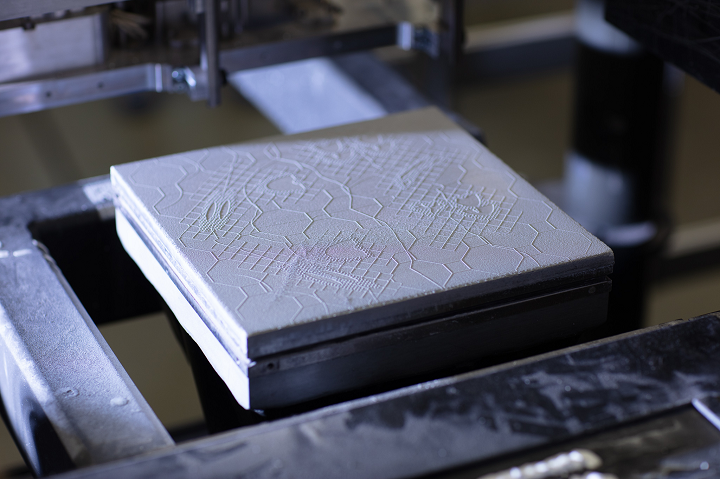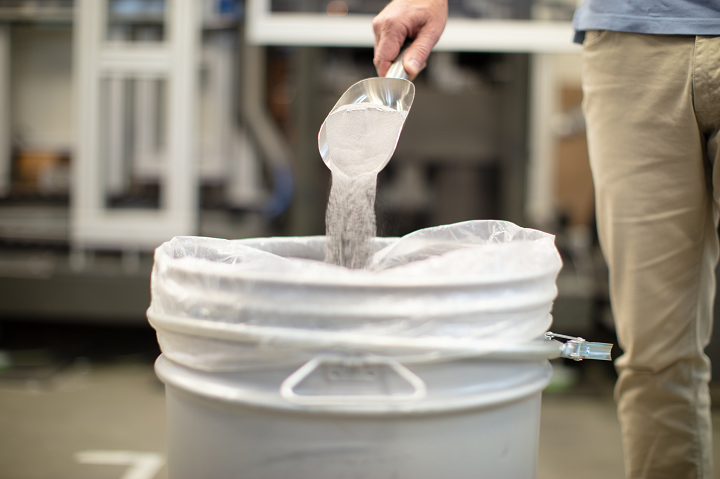At RAPID + TCT in April, Stratasys introduced its multi-color J735 3D printer; at September’s TCT Show, the company showed off its advanced 3D printed carbon fiber parts. Now, during formnext 2018 this week in Frankfurt, Stratasys is helping to usher in a new era of production-grade metal parts 3D printing. The company is releasing more details on a new additive platform it’s developing for short-run metal applications.
“We note that current approaches to 3D printing metal parts leave a lot to be desired – including slow post-processing, painstakingly intricate support removal, and hours of matching and grinding,” said Rafie Grinvald, the Director of Product Marketing and Management for Stratasys. “Combined with the high cost of AM powders, this means each part is expensive, with a total cost of ownership that is too hard to justify. Our new platform is being designed to transform the current metals additive manufacturing landscape – presenting a viable alternative to typical production methods – and helping customers dramatically reduce the costs of creating reliable, consistent production-grade, metal parts for short-run applications.”
 Developed internally over the last several years and unveiled earlier in 2018, this platform is based on the company’s innovative Layered Powder Metallurgy (LPM) technology, which was specifically designed to make it easier, faster, and more cost-effective to produce metal parts for low-to-mid volumes.
Developed internally over the last several years and unveiled earlier in 2018, this platform is based on the company’s innovative Layered Powder Metallurgy (LPM) technology, which was specifically designed to make it easier, faster, and more cost-effective to produce metal parts for low-to-mid volumes.
Stratasys intends for its new advanced platform, which combines short-run metal parts production with the value of 3D printing, to “disrupt conventional manufacturing approaches” and use standard Powder Metallurgy (PM) alloys, with their controlled shrinkage, fast throughput, and high accuracy, to drive cost savings and make 3D printing more efficient.
The LPM platform’s three-step 3D printing process combines commonly-used powder metallurgy with the company’s own PolyJet 3D printing. This process consists of using proprietary thermal ink to print boundaries, and is followed by powder dispensing and spreading, and finally compacting the layer of powder for high density, controllable shrinkage.
Stratasys’ new system, which is ideal for use in markets like aerospace, defense, and automotive, works to address the 3D printing needs of customers in need of small-batch manufacturing during times of product ramp-up and end-of-life, customized, lightweight, complex parts, and pilot-series parts production. Once it’s complete, the platform will offer very high part quality and easily implemented post-processing, and should also be, as Stratasys puts it, “economically competitive vis-à-vis cost-per-part and throughput.”
 Currently, the company is in closed-loop feedback discussions about its new 3D printing metals platform with OEMs and Tier-1s. While product specs and launch timelines for the LPM-based platform are not available just yet, Stratasys will be discussing its new solution, and demonstrating production parts, at formnext this weeky. At its booth G40 in Hall 3.1, the company will be providing detailed customer use-cases, exclusive hands-on demonstrations, and presentations.
Currently, the company is in closed-loop feedback discussions about its new 3D printing metals platform with OEMs and Tier-1s. While product specs and launch timelines for the LPM-based platform are not available just yet, Stratasys will be discussing its new solution, and demonstrating production parts, at formnext this weeky. At its booth G40 in Hall 3.1, the company will be providing detailed customer use-cases, exclusive hands-on demonstrations, and presentations.
To see the LPM 3D printing process for yourself, take a look at the video below:
Discuss this news and other 3D printing topics at 3DPrintBoard.com or share your thoughts in the Facebook comments below.
Subscribe to Our Email Newsletter
Stay up-to-date on all the latest news from the 3D printing industry and receive information and offers from third party vendors.
Print Services
Upload your 3D Models and get them printed quickly and efficiently.
You May Also Like
Reinventing Reindustrialization: Why NAVWAR Project Manager Spencer Koroly Invented a Made-in-America 3D Printer
It has become virtually impossible to regularly follow additive manufacturing (AM) industry news and not stumble across the term “defense industrial base” (DIB), a concept encompassing all the many diverse...
Inside The Barnes Global Advisors’ Vision for a Stronger AM Ecosystem
As additive manufacturing (AM) continues to revolutionize the industrial landscape, Pittsburgh-based consultancy The Barnes Global Advisors (TBGA) is helping shape what that future looks like. As the largest independent AM...
Ruggedized: How USMC Innovation Officer Matt Pine Navigates 3D Printing in the Military
Disclaimer: Matt Pine’s views are not the views of the Department of Defense nor the U.S. Marine Corps Throughout this decade thus far, the military’s adoption of additive manufacturing (AM)...
U.S. Congress Calls Out 3D Printing in Proposal for Commercial Reserve Manufacturing Network
Last week, the U.S. House of Representatives’ Appropriations Committee moved the FY 2026 defense bill forward to the House floor. Included in the legislation is a $131 million proposal for...



































